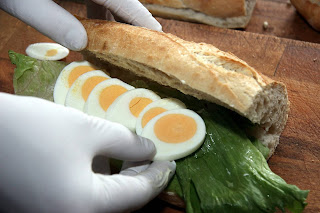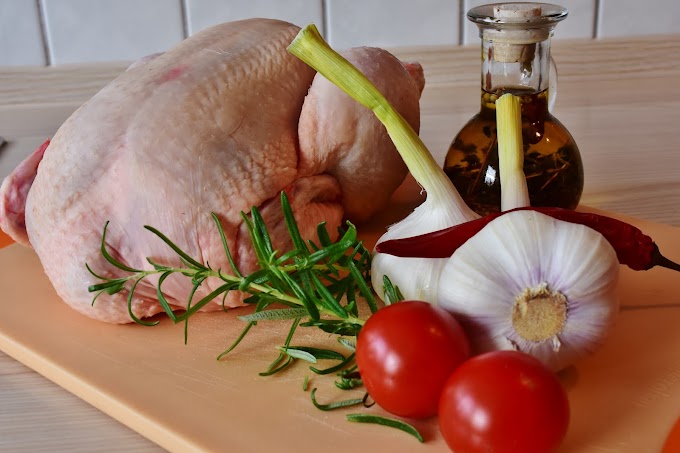Facilities design- Design and Layout for a Hotel Facilities(Walls, ceilings, floors, lighting, ventilation, water supply, waste disposal, Hand washing, change rooms and food contact surfaces. (- Traincan)
Proper facilities design, location and construction of food premises minimizes the risk of food becoming contaminated. The layout should be designed in one direction following the flow of food from receiving through to serving. Proper planning also takes into consideration the various types of food volumes, processing and equipment requirements. Foot traffic should be taken into consideration when planning the layout to minimize contamination of food. When choosing the right layout for your business keep non-food areas such as the dishwashing area, garbage storage, etc. in separate areas from food preparation areas. Ensure clean and sanitized dishes are stored away from dirty dishes and arrange tasks so employees don't criss-cross or backtrack through work areas.
Walls and ceilings
Walls and ceilings must be built with materials that are durable, non-absorbent, light coloured, smooth and easily cleaned. Floors must be durable, easily cleaned and non-slip. Floors must be designed with a slope to allow draining of moisture and should be coved at the wall. Coving is a curved, sealed edge which helps make cleaning easier.
Lighting
Lighting fixtures must be durable, easily cleaned and bright enough to ensure a safe and sanitary working environment. Shatter-proof coverings must be used with light bulbs to protect food from broken glass.
Ventilation system
Ventilation systems must comply with local/provincial/territorial requirements. Vents and hoods must be equipped with proper ventilation to ensure that air-borne contaminants including grease, smoke and heat do not contaminate food, food contact surfaces or equipment. All vents and hoods must also be kept clean to prevent fire hazards.
Water supply
Your water supply must come from approved sources that meet public health requirements. It must supply potable (drinkable) hot and cold water with adequate pressure and quantity to meet peak demands.
Waste management
Solid and liquid waste systems must meet local/provincial/territorial requirements. Carefully manage all solid waste and sewage water in a safe manner to prevent the spread of pathogens, contamination of food or from attracting pests. Liquid waste must be disposed of carefully as it is considered sewage and could easily contaminate food and other items. Empty indoor waste containers when full or at least daily. Have outdoor waste containers emptied when full or at least two times per week. Ensure all waste containers are well maintained, leak-proof, easily cleaned and have secure covers or lids. Cleaning water from waste containers must be considered sewage and disposed of accordingly. Regularly empty, clean and sanitize garbage rooms and containers to minimize the attraction of pests.
Handwashing and sanitation
Handwashing stations must be conveniently located, available and easily accessible for use by food handlers at all times. Keep handwashing stations stocked with a sufficient flow of hot and cold running water, single-use soap dispensers and single-use paper towel dispensers. A handwashing instruction sign and a clean garbage can should be provided. Handwashing stations must not be used for food preparation or the disposal of sewage water.
Changing room and Restroom
Employees should be provided with a clean, secure area to change and store their belongings. Employee restrooms must be properly located and equipped to prevent food from fecal contamination. Toilet facilities must be conveniently located, well lit, kept clean, well stocked and in good repair to prevent the spread of contamination. If possible, place the garbage can near the door so that employees can use the paper towel to open the door before discarding. Provide handwashing signs, hooks outside the facility to hang aprons, coats, etc.
Food contact surfaces
Food contact surfaces (equipment, utensils, or surfaces) must be smooth, non-absorbent, corrosion-resistant, durable, easily cleaned and well maintained.
Cutting boards
Separate cutting boards should be provided for various raw and cooked foods. Colour coded cutting boards can help prevent cross-contamination. Replace surfaces or equipment that is chipped, cracked or in ill-repair to minimize the risk of cross-contamination. All contact surfaces must be properly cleaned and sanitized after each use.
(This article is a part of traincan knowledge and I am sharing for information and knowledge purposes. If you are planning to do food handlers basic certificate and advanced certificaton i recommend you traincan. Their certificate is valid all across Canada and count as prestigious certification in world as they provides accurate information with webcam exam)






















4 Comments
I found this Crockery blog very informative. Keep up the good work. and also post about more Hospitality Supplies.
ReplyDeleteA very delightful article that you have shared here about Foodservice Eggs. Your blog is a valuable and engaging article for us, and also I will share it with my companions who need this info. Thankful to you for sharing an article like this.
ReplyDeleteReally good work there. Informative and helpful. Appreciate it erp software companies
ReplyDeleteVery good article I never read such types of information we look ahead for next hospitality supply information.
ReplyDeleteIf you have any doubts , please let me know